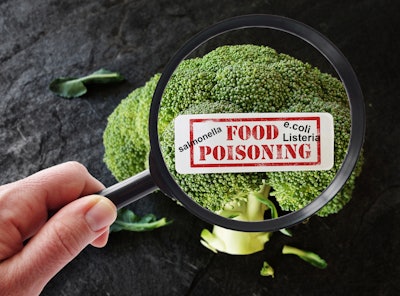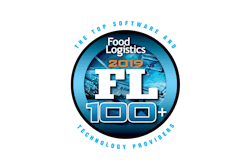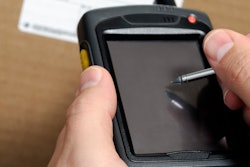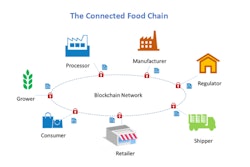
While the food supply appears that isn’t getting any safer, technology is enabling us to trace and catch potential food safety issues. The number of food recalls in the U.S. increased by 10% from 2013 to 2018 — and meat and poultry recalls nearly doubled, rising by a whopping 83% over the same time period.
Spurred by consumer expectations, the complexity of today’s global food supply chain means food items travel much farther to reach store shelves, increasing the potential for contamination and creating serious public health risks. It’s an issue with serious ramifications for suppliers and food retailers as well as the consumers.
Read Next: FDA Has Suspended 6 Facility Registrations Under FSMA
As players across the food supply chain search for ways to improve food safety, blockchain and other technologies are emerging as attractive strategies for reducing the threat of contamination.
Contamination risks and the global food supply chain
With September designated as National Food Education Safety Month, the public is concerned with recent mass recalls that have made headlines about the food supply. In recent years, the FDA has emphasized food safety and increased the pace of food inspections. Yet, 48 million people — one in six Americans — still fall sick from a foodborne illness each year.
Ironically, at least part of the blame for the rise in foodborne threats falls on consumers themselves. To meet consumer demand for a wider selection of products year-round, the food supply chain has gone global. Half of all fresh fruits and approximately a third of vegetables consumed are grown outside of the U.S., according to a report from the U.S. PIRG Education Fund. Even more alarming, a large portion of the seafood we consume is transported to the U.S. or processed from foreign suppliers.
Food suppliers play a key role in preventing contaminated food from reaching consumers. Food-related illnesses may never disappear entirely. But it’s time for both suppliers and retail food outlets to invest in new strategies — including innovative technologies capable of reducing contamination threats to public health.
Blockchain + ERP: the best defense against a tainted food supply
When a food contamination event occurs, it can be difficult to identify the source of the problem. As public health officials scramble to locate the product’s point of origin, suppliers and grocers discard similar food items out of an abundance of caution. Rather than risk the health of consumers, the industry removes large quantities of products from the food supply — even though many of those products may be completely safe for consumption.
It’s even more difficult to ascertain the status of food when it arrives at the point of sale. In many cases, a lack of information about the handling of food products can result in foodborne illnesses. Given the complex nature of today’s food supply chain, suppliers and grocers need a way to proactively prevent consumers from purchasing food items that may have been compromised during transit.
Blockchain and enterprise resource planning (ERP) technology create a new level of transparency in the food chain. With blockchain, each food item is attached to a permanent and unalterable transaction record, allowing suppliers to accurately track the product at every point along the supply chain. This allows suppliers to quickly identify expiration date, batch number, farm of origin and other key data points like temperature, reducing the amount of time it takes to effectively respond to a potential contamination.
Read Next: Transparency in the Global Food Supply Chain is a Must-Have
When used in tandem with an ERP solution, blockchain provides a complete history of entire shipments, enabling better transparency and a more proactive approach to food safety. For example, let’s say the blockchain record for a shipment of seafood includes temperature. If the temperature rises above the acceptable temperature threshold in transit, suppliers are notified and can prevent the sale of products contained in shipment. Similarly, grocery outlets can count on the blockchain record of inventory to spot product recalls or other threats.
Going forward, the food supply chain will only grow more complex. As food retailers race to provide consumers with an ever-expanding range of products, suppliers will be asked to source even more products from global points of origin. As a result, the threat of contamination — either at the originating location or in transit — will challenge the industry and consumers for the foreseeable future.
Combined, blockchain and ERP technology offer the best solution for combatting the contamination of the food supply. As a distributed ledger, blockchain provides an accurate and permanent record of products’ journey along the supply chain; ERP solutions make this information accessible and actionable, allowing suppliers and retailers to quickly resolve or even prevent food recalls and other costly actions.
The result? Improved cost efficiencies, a safer food supply and happier, healthier consumers.



















